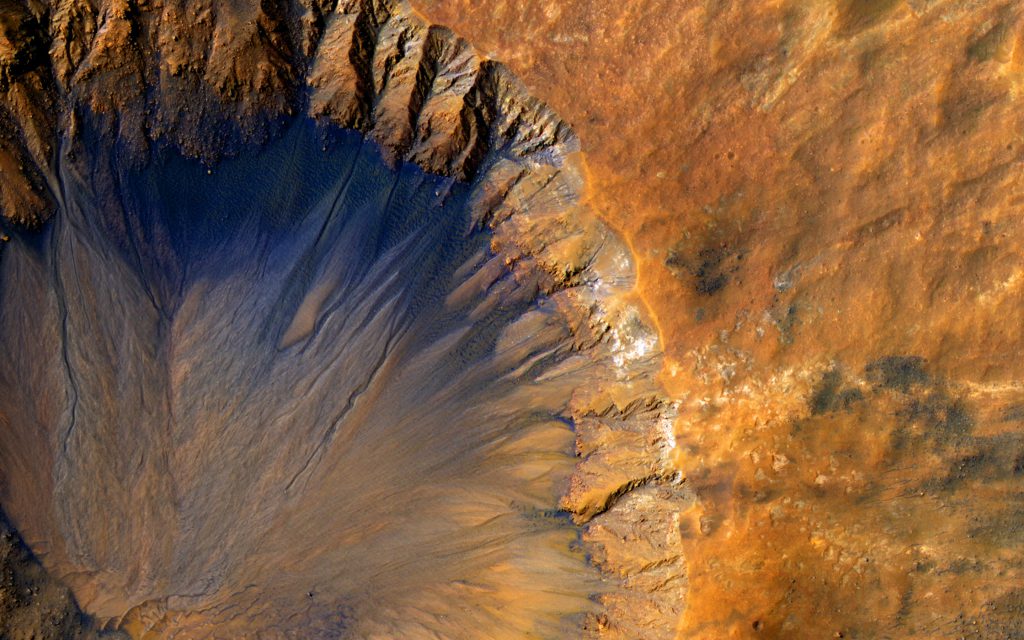Geological evidence collected by the Martian exploration rovers reveals that the Red Planet had a warm and wet past, with conditions potentially ripe for life as we know it. These conditions were present 4.1 – 3.7 billion years ago during a time called the Noachian Period, which was characterized by volcanism and liquid water, as well as salty, sulfur-filled pools. This discovery has since prompted a surge of interest by researchers to determine what Martian life, if any, may have looked like during that early period in Mars’ history. Since we cannot go back in time to Noachian Mars, researchers must study analog, or matching, environments on Earth that mirror early Martian conditions.
Since Mars is not currently known to host life, these Earth locations provide a best guess as to what life might have looked like in this ancient environment. Researchers from the Open University and the University of St. Andrews chose to investigate one such analog environment on Axel Heiberg Island, an island in the Canadian High Arctic, to pursue the biological mysteries of early Mars. The island contains a series of unique pools full of sulfur and other chemicals that match the recipes predicted for Noachian Mars pools, making them ideal for gathering information about that dynamic period of Mars’ past.

This is a map and a photograph of where the study samples were collected. Source: Nature. Licensed by Creative Commons Attribution 4.0
The researchers chose one Canadian Arctic pool that best matched the minerals and chemicals on early Mars, and they took samples of the sediments from around the water. From these samples, they separated, or extracted, the DNA from the microbes living in the sediment in order to identify what kinds of microbial species were able to live near the pool. To do this, the researchers looked at one specific gene sequence that codes for a molecule essential for all bacterial life on Earth, called 16S rRNA. Because every bacterial cell on Earth has this gene sequence, the variations within it serve as a molecular fingerprint that helps scientists tell apart different species of microbes without having to analyze all of the DNA.
After the DNA analysis, the researchers found that the majority of bacteria in the sediments were microbes that use sulfur as their primary energy source. For comparison, humans mainly use glucose and oxygen to obtain energy by converting it to CO2. These microbes do a similar thing, except they break down sulfur-containing molecules in a process called sulfur oxidation.
Once the researchers identified the sulfur metabolizing microbes, they then evaluated how efficient, or worthwhile, the sulfur metabolism reaction would be for Martian microbes. Given the ingredients present in the Noachian Mars soil and atmosphere, they calculated the amount of energy that a microbe could gain from using sulfur. Essentially, if it required more energy for the microbes to obtain the sulfur and other ingredients than the actual sulfur oxidation process could produce, then the process would not be viable to sustain life. However, after the energy calculations, the researchers confirmed that the sulfur oxidation metabolism is in fact favorable for Noachian Mars conditions.
Based on these results, the researchers concluded that sulfur metabolism is a strong candidate for biological energy production for early Martian life. By having an idea of what early Martian life may have been eating, researchers can then search for geological and chemical clues that reveal the existence of living or extinct forms of life. These clues, which can only be produced by biological interactions, are called biosignatures. The discovery of sulfur oxidizing bacteria as a potential Martian lifeform helps narrow down the types of biosignatures scientists should focus on during future missions to the Red Planet.


